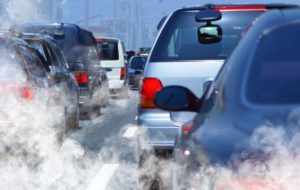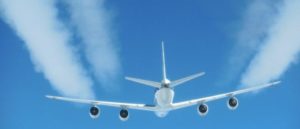Automotive

Since the United States Clean Air Act passage in 1970, automotive emissions testing has been carried out to both certify vehicles to relevant criteria pollutant standards and to develop new control strategies to further reduce key air pollutants such as Oxides of Nitrogen (NOx, N2O), Carbon Monoxide (CO), Total Hydrocarbons (THC), and Particulate Matter (PM).
The Environmental Protection Agency sets the regulations for both the limits (Standard Setting Part) that must be met and the measurement methods (Engine and Vehicle) automakers must use in order to certify new vehicles for use in the US. The United Nations Economic Commission for Europe (UN-ECE) performs the same function for the European Union.
In order to meet the ever increasing demand for lower limits on criteria pollutants, emissions measurement instrumentation suppliers continue to supply more technologically advanced and automated devices to meet both standards requirements as well as ease of use demands by their customers.
Aviation

Aircraft engine emissions are regulated primarily through the International Civil Aviation Organization (ICAO), which is a United Nations specialized agency charged with managing the administration and governance of the Convention on Civil Aviation (Chicago Convention 1944). Each member state is responsible for certifying that aircraft engines produced within their State meets limits defined in Annex 16-Environmental Protection, Vol. II.
In the United States this responsibility falls on the Environmental Protection Agency , which sets limits in lock step with ICAO at a minimum, and the Federal Aviation Authority (FAA), which has responsibility for certification. Although ICAO has set Smoke limits since the early 1970’s and gaseous (THC, NOx, & CO) limits since the early 1990’s, the US EPA only started adopting those limits into the CFR in 1997 as part of their charge with respect to the Clean Air Act of 1970.
In the beginning, emissions regulations were limited to CO, THC, Smoke Number, and NOx. The former three criteria pollutant regulations have largely been unchanged, however, the NOx limits have been reduced several times over the years as more efficient turbine engine development has required higher and higher combustion chamber pressures. The latest reduction (15% lower than limits set in 2005) was set to be in effect on December 31, 2013.
Expert Help is available
Today’s testing market is complex and finding highly skilled emissions measurement resources, who can bridge the many gaps inherent in test programs, is difficult. If that weren’t hard enough, finding the cost structure, allowing the hire of such an individual, is extremely challenging.
Singularity Scientific offers a complete, professional solution without the headache of altering organizational structure and investing long term in the form of expensive benefits. Singularity Scientific brings over 10 years of experience in Emissions Instrument Service, Emissions Applications, and Emissions Regulations to your Testing Program.
The President and CEO, being a voting and contributing member of Society of Automotive Engineers (SAE) committees in the Automotive (Engine and Vehicle Emissions Standards Committee) and Aviation (E-31 Bleed Air, Gaseous, and Particulate Matter technical working group) fields, can provide your testing program with unparalleled service and advice guaranteed to increase your efficiency while lowering your total cost.
